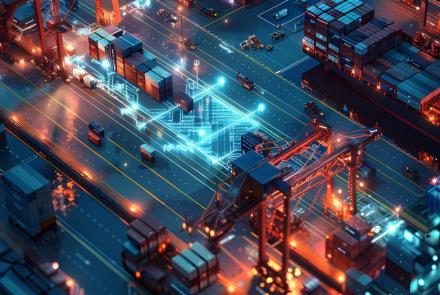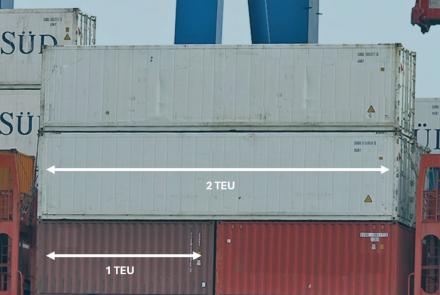THE INTRICATE JOURNEY: UNVEILING THE MANUFACTURING PROCESS OF SHIPPING CONTAINERS
 Shipping containers are fundamental to global trade, facilitating the transportation of goods across vast distances efficiently and securely. While they appear like simple metal boxes, the manufacturing process of shipping containers involves a meticulous sequence of engineering, fabrication, and quality control steps. Let’s delve into the fascinating journey of how these giant boxes spring to life, traversing from design and engineering to final inspection and shipping.
Shipping containers are fundamental to global trade, facilitating the transportation of goods across vast distances efficiently and securely. While they appear like simple metal boxes, the manufacturing process of shipping containers involves a meticulous sequence of engineering, fabrication, and quality control steps. Let’s delve into the fascinating journey of how these giant boxes spring to life, traversing from design and engineering to final inspection and shipping.
Design and Engineering
The manufacturing process commences with meticulous design and engineering. Engineers collaborate to develop container specifications, considering factors such as size, capacity, and structural integrity. Modern designs incorporate computer-aided design (CAD) software, which helps optimize container dimensions and layout for maximum space utilization and structural strength.
Sheet Metal Cutting
Once the design is finalized, large sheets of steel are cut into precise panels using specialized machinery. This step sets the foundation for the container's structure and dimensions.
Corrugation
The corrugation process adds strength and rigidity to the panels. Corrugated patterns are embossed onto the steel sheets, enhancing their ability to withstand the stresses of stacking and transportation.
Side Wall Assembly
Corrugated panels are then welded together to form the container's side walls. Precision welding ensures that the structure is sturdy and airtight, preventing water and air infiltration during transportation.
Front and Rear Wall Assembly
Similar to the side walls, the front and rear walls of the container are assembled, incorporating features such as corner posts, forklift pockets, and locking mechanisms.
Roof and Floor Installation
The container's roof and floor are carefully installed, further reinforcing the structural integrity. The floor is typically made from marine-grade plywood, providing a durable and stable base for cargo.
Door Frame Installation
Door frames are integrated into the container's structure, allowing for the installation of doors. These frames are designed to be robust, ensuring the doors can withstand the demands of frequent opening and closing.
Inspection and Quality Control
Throughout the manufacturing process, rigorous inspections and quality control checks are conducted. These inspections verify the accuracy of measurements, welding quality, and adherence to design specifications.
Surface Treatment
To enhance durability and prevent corrosion, containers undergo surface treatments such as sandblasting and coating with weather-resistant paints. This step is vital for ensuring containers withstand the harsh conditions of sea voyages.
Door Installation
Container doors are installed, complete with locking mechanisms and weatherproof seals. These doors are a crucial aspect of container functionality, providing secure access for loading and unloading cargo.
Final Inspection and Testing
As the manufacturing process nears completion, a comprehensive final inspection is conducted. This includes structural assessments, door functionality tests, and leak detection to ensure the container meets stringent quality standards.
Markings and Identification
Containers are marked with essential information such as identification numbers, maximum payload capacity, and owner/operator details. These markings aid in tracking and managing containers within the global supply chain.
Packing and Shipping
Once containers pass final inspection, they are prepared for shipping. They may be stacked and transported to port facilities, where they are loaded onto ships for distribution around the world. Careful packing and securing of containers minimize the risk of damage during transit.
The intricate steps involved in the manufacturing of shipping containers showcase the amalgamation of precise engineering and skilled industrial artistry. From the initial design stages to the final inspection, each step contributes to creating a robust, reliable, and efficient container for transporting goods across the globe. As international trade continues to thrive, the role of shipping containers remains indispensable in shaping today’s interconnected world.
VS&B Containers, headquartered in Chennai, began operations in 1996. The company offers a wide variety of containers, both newly built and used, and custom-built units that can be directly shipped from our manufacturing facilities to your preferred destinations across the world. We also operate a leased fleet of over 35,000 containers for both international leasing and domestic leasing (within India). If you have container requirements, do drop us an email at enquiry@vsnb.com and a member of our team will reach out to assist you.
Furthermore, iInterchange Systems (A VS&B group company) provides state-of-the-art software solutions tailored specifically to meet the needs of container shipping and logistics enterprises. Please visit www.iinterchange.com or drop us an email at sales@iinterchange.com for more details.
- Log in to post comments






